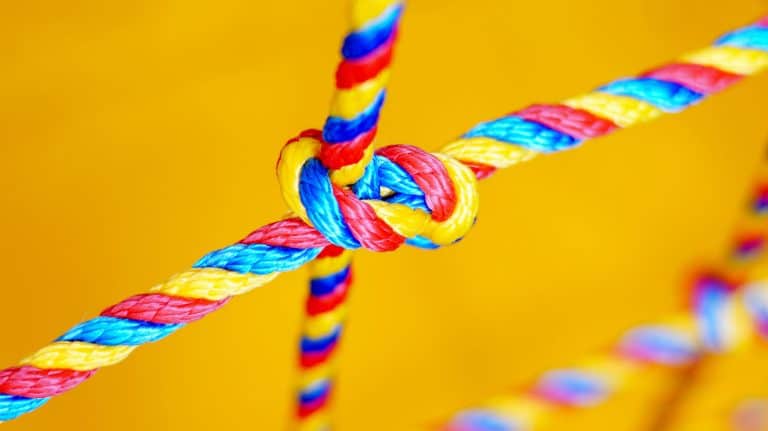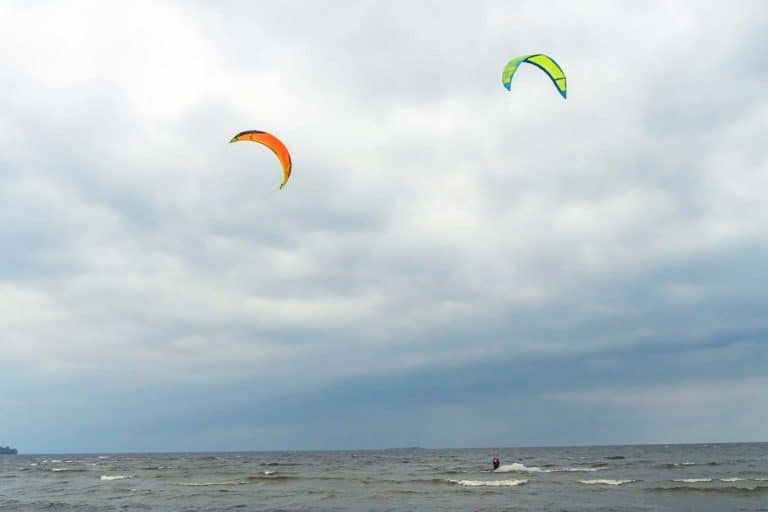Kite Lines: How Long Do They Last?
Kite lines are a vital part of kiting equipment. Quite frankly, kites can’t get in the air without kite lines. Having these strings in the proper form, therefore, affects flying. In this article, we tackle kite lines and how long they last.
Kite line replacement depends on the material, age, and usage. Some have had kite lines for as long as eight years. Others change them after 100-150 sessions of use. However, this number varies for different flyers.
How Often Should You Replace Kite Lines?
With time, kite lines become stretched and worn out. Constantly checking bridles and lines to ensure they are in the proper condition; therefore is essential. If broken or frayed lines are identified, they should be immediately replaced (Source).
When flying kites, the lines are always under a lot of tension. This tension can become hazardous, and the lines become flying razor blades: both kite flyers and those in their path risk harm by the line. Therefore, protective clothing (gloves) should be worn, and extra caution is essential when flying around spectators.
Knots tend to weaken kite lines. If knots are one too many, fliers should consider replacing the line.
To minimize risk when flying, the line material should be considered. Fishing lines and steel lines, for example, should always be avoided. Fishing lines are harmful as once they break, they tend to recoil. Steel lines can turn kites into lighting rods. It is especially when exposed to lightning or electrical lines.
How one treats their line, line brand, and riding style are all factors that determine the lifespan of a kite line. For example, does one remove their kite in the hot sun? Does one remove knots on the line? And how does one go about handling stuck lines? (Source)
Trouble spots tend to appear before line breakage. It gives owners ample time to remedy the issue either through fixing or replacing. Long-time kite fliers tend to have various lines.
Using newer lines on windy days and older lines on light winds will ensure the lines last longer.
How one rides and where they ride also influence kite line lifespan. Some replace kite lines every year, but that is after hard usage for one year (Source).
How Long Does A Kitesurfing Harness Last?
There are kite sports that require a harness. The harness connects the kite flyer to the kite bar. Instead of the kite’s pull being on the kite flyer’s hands, it’s transferred to their body. Picking the right one, therefore, is necessary (Source).
There are various types of harnesses in the market. Individuals can pick particular ones based on their preferences. Regardless of choice, however, all harnesses must possess several qualities. These include comfort, the right size, quality materials, and safety functions.
Comfort will ensure the harness is neither too tight nor too loose. Safety material will prevent breathing problems, and safety functions will ensure you’re protected. Before purchase, a thorough inspection should be conducted to ensure all parts are well assembled.
Most kiting equipment lasts longer when they are well cared for. Inspections before kiting, rinsing with fresh water, and storing in cool places are all activities that increase their lifespan. The fuss for new gear will occur less frequently, with some lasting for about three years without reasons for concern (Source).
Harnesses are constructed differently and vary in quality. With time, stitching and webbing may break down. However, they do last for about 4 to 8 years.

How Long Should A Kite Line Be?
How kites perform changes with their different line lengths. The drag and stretch experienced by shorter lines are less than that experienced by longer lines. Kite speed and response of longer lines are affected because they have to travel in a longer arc. Both the speed and the response time will be slower (Source).
Kite fliers who operate power kites opt for longer lines than those operated by stunt kite fliers. Longer kite lines on a kite translate to longer arcs which means the power window created is larger.
The preferred line length of a power kite ranges between 75′-150‘. It depends on wind conditions. Shorter kites are used in stronger winds in this case and longer kites in strong winds. Instead of having different kites for different wind conditions, one only needs to get lines of different lengths.
On the other hand, stunt kite fliers opt for shorter lines. It is because, with these lines, they can improve the performance of their kites. Quicker turns will characterize the performance. Precise and accurate responses to the controls are also experienced. The preferred line length is 50′-100′.
When purchasing lines, several practices should be carried out. Checking if multiple lines are of the same length is a must-do. It should be done after every 20-hour kiting. Also, beware of knots and tangles on the lines. It is because they affect the strength of lines (Source).
Lines that are worn out should be dealt with immediately. There is a high possibility they will snap while in use. Replacements should be found.
Successful kiting depends highly on how kite lines are handled. Other than wearing out, these lines are affected by repeated use, reeling, and damaging behavior when using them (Source).
Do Kite Lines Stretch?
Sport kites use about two to three lines at the same time. While single kite lines appreciate stretch, sport kite lines do not. They have a very minimal need for stretch (Source).
Repair and maintenance of different lines vary depending on the activity they’re used for. Misuse of these lines can result in property and person injury. Particularly the Manjha kite line.
Various lines have different characteristics. While others experience stretch and stay stretched, there are those that stretch and rebound to how they were before. While others are slippery, some will not slide at all.
Dacron lines, for example, are great for newbies. These lines tend to be heavy and cause stunt kites to fly slower. Kite response will also be slow because of the added stretch they experience. Fortunately, stretching in Dacron lines is not as critical as in other lines. It is because it rebounds to its initial length (Source).
However, while Dacron lines do rebound, they experience stretch in high amounts. It affects their performance, degrades control, and causes them to react faster than other lines. Spectra, on the other hand, has less stretch compared to Dacron.
Kite lines require replacement after some time. With quality lines, you are assured of several sessions. Unfortunately, some lines have been known to break while still new.
Summary
Kite lines are an integral part of kite flying. Having them in a suitable condition ultimately leads to successful and enjoyable kiting experiences. Once weak spots are identified, flyers should replace kite lines.
While the numbers vary from person to person, there are those that replace kite lines every 12-18 months. Earlier replacement occurs when they experience damage before then.
Sources
- A Wind of Change, http://www.awindofchange.com/lessons/lesson1-4.html, Accessed April 1, 2022
- Kite Forum, https://kiteforum.com/viewtopic.php?t=2402881#:~:text=push%20the%20limts.,use%2C%203%20years%20light%20use., Accessed April 1, 2022
- Bay Area Kiteboarding, https://www.bayareakiteboarding.com/forum/viewtopic.php?t=7492, Accessed April 1, 2022
- Surfer Today, https://www.surfertoday.com/kiteboarding/how-to-choose-a-kiteboarding-harness, Accessed April 1, 2022
- Pro Kite South Padre, https://prokitesouthpadre.com/?page_id=393#:~:text=Harnesses%3A%20Between%204%20and%208,vary%20in%20quality%20and%20construction., Accessed April 1, 2022
- A Wind of Change, http://www.awindofchange.com/lessons/lesson1-4.html, Accessed April 1, 2022
- Mateusz Gargula, Kiteboarding Lines, https://kiteboardinglines.com/blogs/news/all-about-kitesurfing-lines-kite-lines, Accessed April 2, 2022
- Wikipedia, https://en.wikipedia.org/wiki/Kite_line, Accessed April 2, 2022
- Wikipedia, https://en.wikipedia.org/wiki/Kite_line, Accessed April 2, 2022
- A Wind of Change, http://www.awindofchange.com/lessons/lesson1-4.html, Accessed April 2, 2022
- Kiting Planet, https://kitingplanet.com/4-signs-its-time-to-replace-your-kite-lines/, Accessed April 2, 2022







